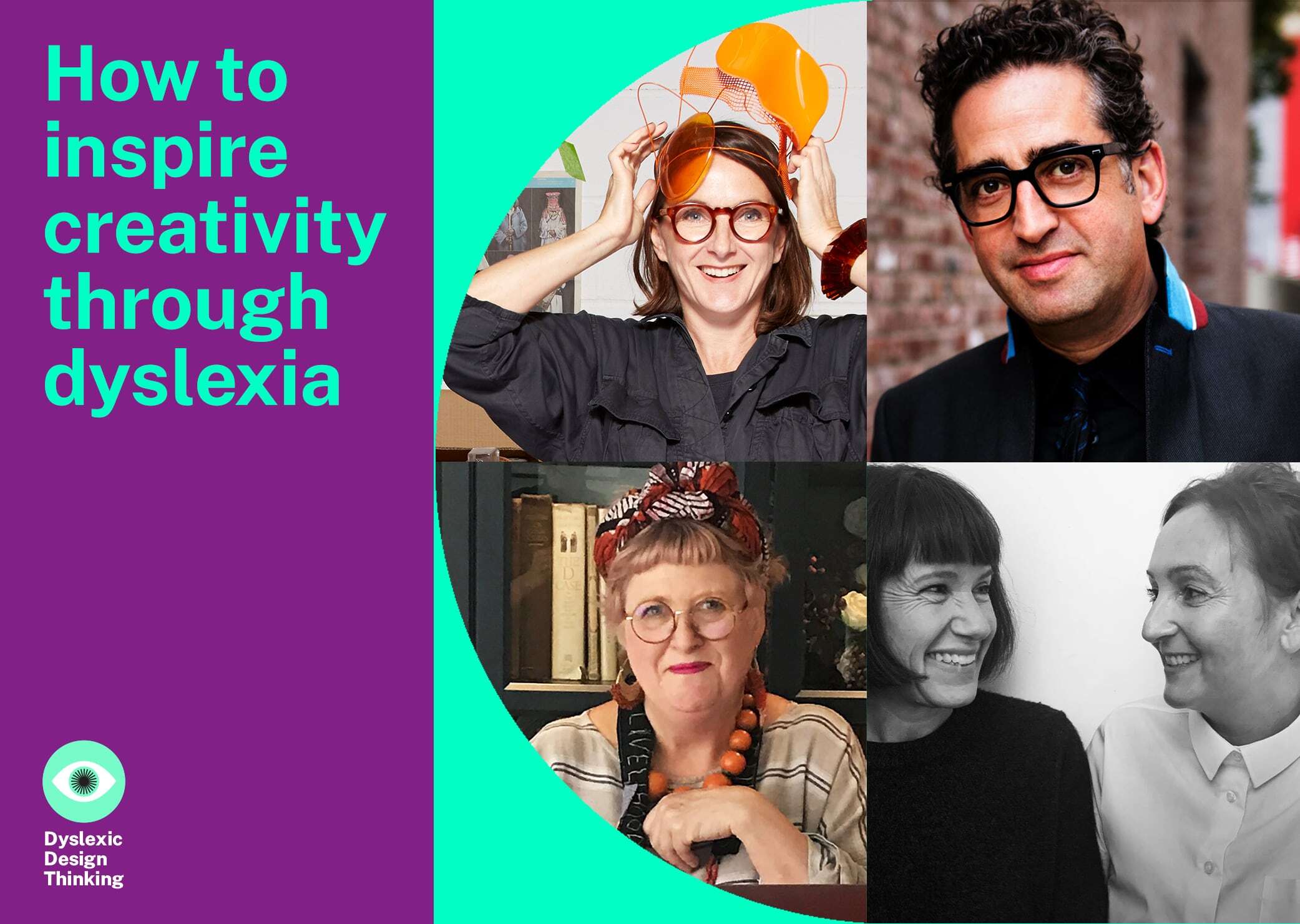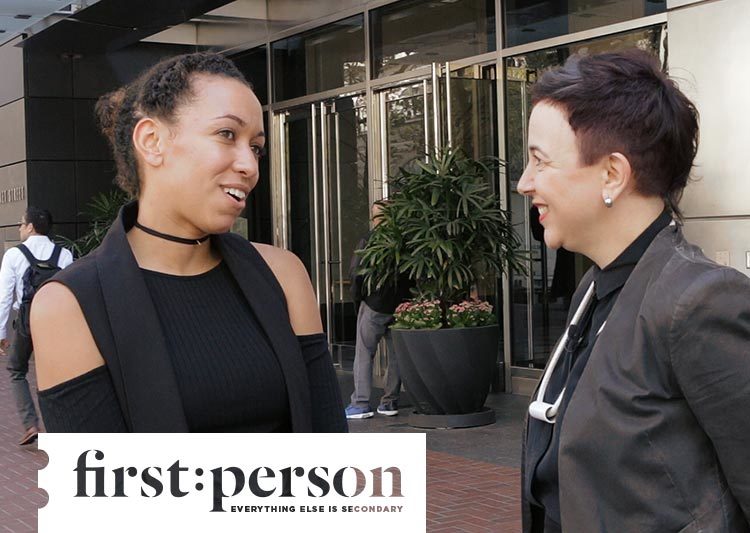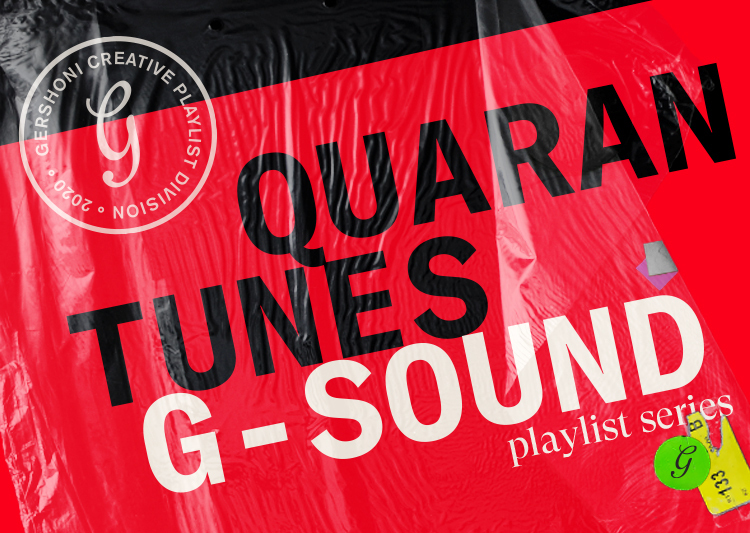
A pirate ship with sails crafted entirely of espresso. That’s what Zelia, our account manager, shared in response to the prompt Create a finger painting using any material you have on hand. My laugh at the dark-roast plank coming off the stern upstages the story she’s telling about it on our agency-wide Zoom call. I surprise even myself with how I feel the tension in my jaw relax. My attention darts to the other thumbnails — strategists, designers and project managers at Gershoni — who have had a similar feeling of amusement and connection. Possibly, even you have a small sense of relief just hearing about it. That’s what play can do. And it’s why our agency started Creative Interventions, a series of midday mini-experiments in productivity, community and flow.
We asked ourselves: Can intermittent distractions actually make teams more focused?
Answer: Yes. And more fun, too.
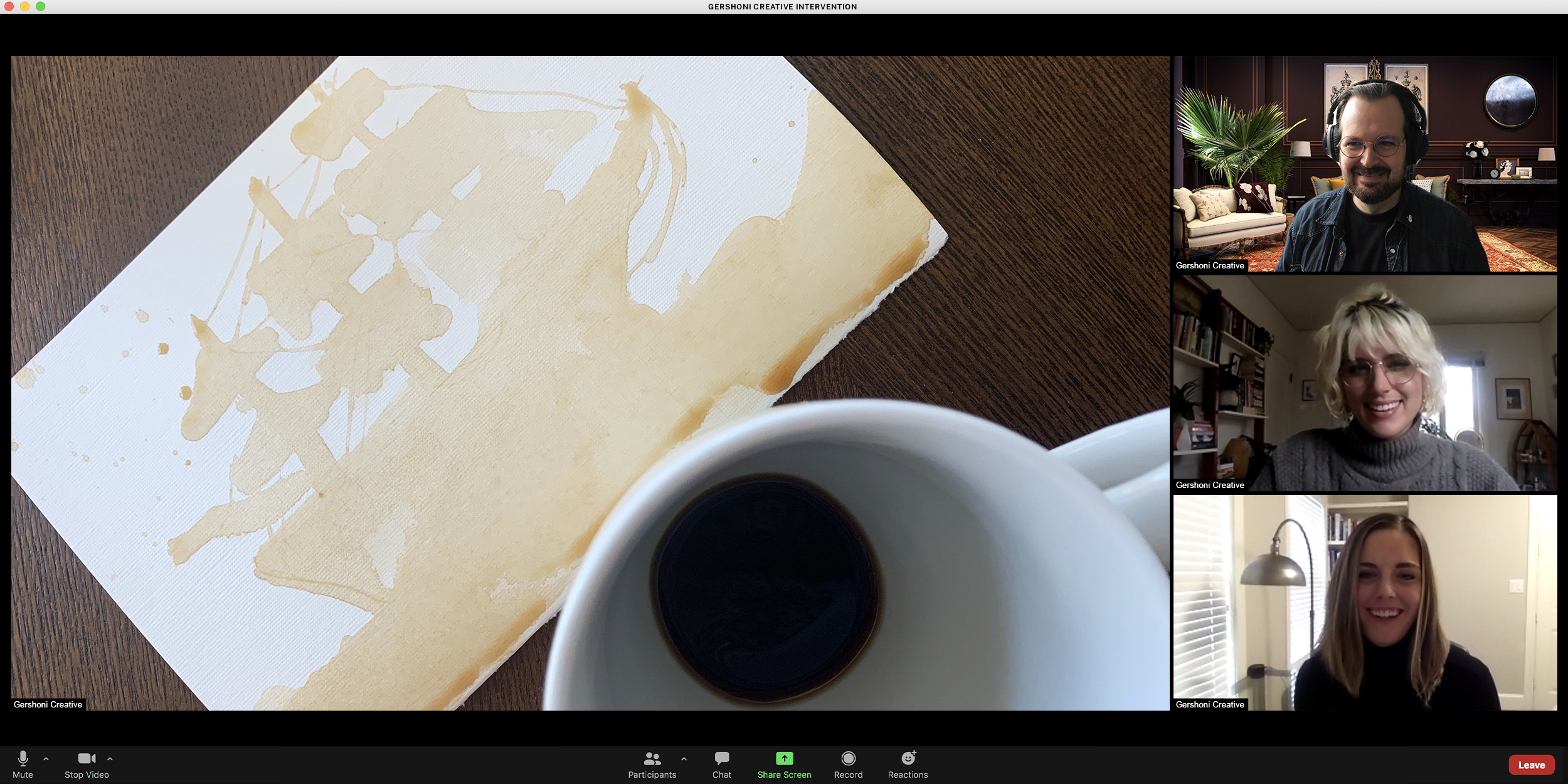
Let’s face it: Working from home can be frustrating. We’re parked at our kitchen tables, with little sense of belonging and few avenues for self-expression. In early April, we saw a sort of lethargy take hold in our internal Zooms as the chatter of days past began to peter out. Our collective energy level was at a low. This comes as no surprise to you. Or to the people on your team.
What does come as a surprise is that few leaders see that as a business problem. And let’s be clear: That’s what it is.
Our attitudes are assets. It’s a key way a business can increase the value of a Zoom brainstorm or a client call.
Others may solve WFH strife with a SWOT analysis and HR conversations. Or, more likely, no solve at all. I, however, have always turned to what I’ve come to acknowledge as my hyper-ability.
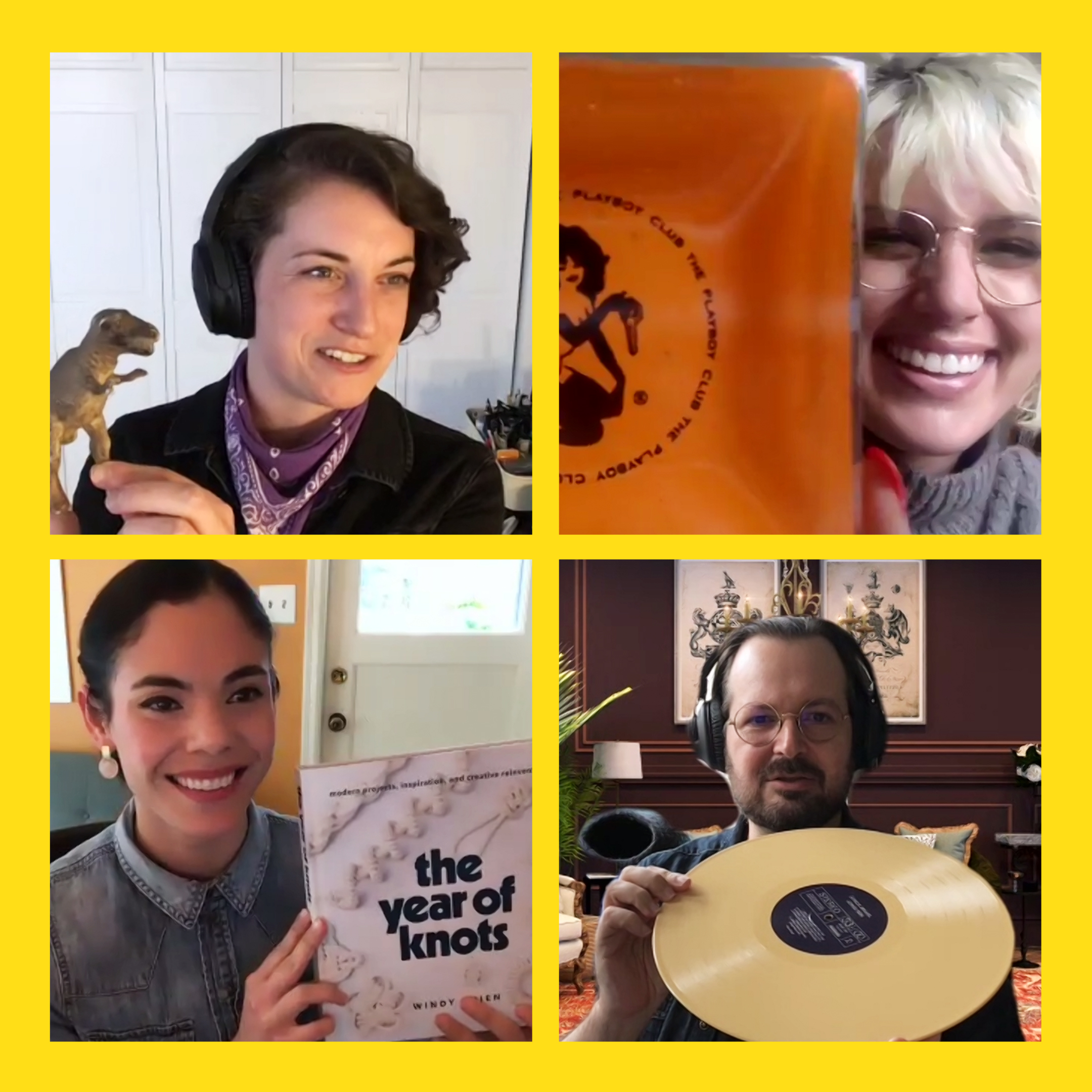
Dyslexic Design Thinking
As a dyslexic, the way I approach the world is shaped by how I process the world.
While dyslexia is linked to difficulties in word recognition (as in the 2012 study in the peer-reviewed scientific journal Current Biology), it is also linked to strong narrative and interconnected reasoning (as noted by learning disabilities specialist Brock Eide) as well as increased entrepreneurial skills (noted in the 2009 study by a professor emeritus at Cass Business School). It’s simply how I’m wired. And it’s something that I’ve embraced as a creative delivering transformational concepts and as a leader shaping team culture.
What I discovered was this:
The team needed reasons to pivot into a state of play, relaxation and joy so they could bring a renewed sense of energy to their days and their work.
And they needed it regularly.
We all have to decelerate and reaccelerate. Right now, we can’t shift in that way because we don’t practice shifting in that way. We have our foot on the pedal all day — and it shows.
Think about it this way: Going on a five-mile run once every few months gives you a bursts of energy. Doing it twice a week gives you a more consistent flow. It makes you scale staircases, sing without gasping and bend down to pick up a dropped sock.
We need to be able to transition from work to play with that level of ease and frequency. It’s a simple switch that leads to compounding benefits.

The Benefit of Creative Interventions
Our teams needed a reason to step away from their screens as much as they needed the brain-boosting benefits. As leaders, we create the culture and its unspoken rules and permissions. Say loudly and proudly: Keep the cobwebs out. Reflect on a new idea. Look up from the screen and see what’s there. Stand up and go in search of something. Go outside — and not just to buy something. Then see what happens to team cohesion.
We knew our mission: catapult productivity, community and flow. What we didn’t know were the other perks we’d see it give way to. I’ll let my team share those with you:
Whole-Brain Thinking
“When you’re painting or using your hands to do something different, the brain is unlocking different sides. It can help with breakthroughs, reignite memories… With the work we do, we have to consider everything as possible. We have to generate ideas.” –Zelia P., Account Manager
Reawakening Creativity
“I’m often surprised by coworkers that deem themselves non-creatives but are showing up with the most creative posts, either aesthetically or storywise… Beautiful photography, layout and composition.” –Andre C., Design Director
Rehumanizing the Team
“I’ve seen a new sense of trust and even tenderness between people since we started sharing more of ourselves and our creative processes with each other.” –Sarah W., Account Manager
Preventing Burnout
“In a way that surprised even me (as one of the team members developing the prompts), doing the Creative Interventions really helped me transition from work life to home life. There’s something about breaking up the workday with little creative challenges that stops me from mentally going overboard on work.” –Sarah C., Copywriter
That’s the upside. Now, what will it cost to get there? Two hours per staff member, weekly.
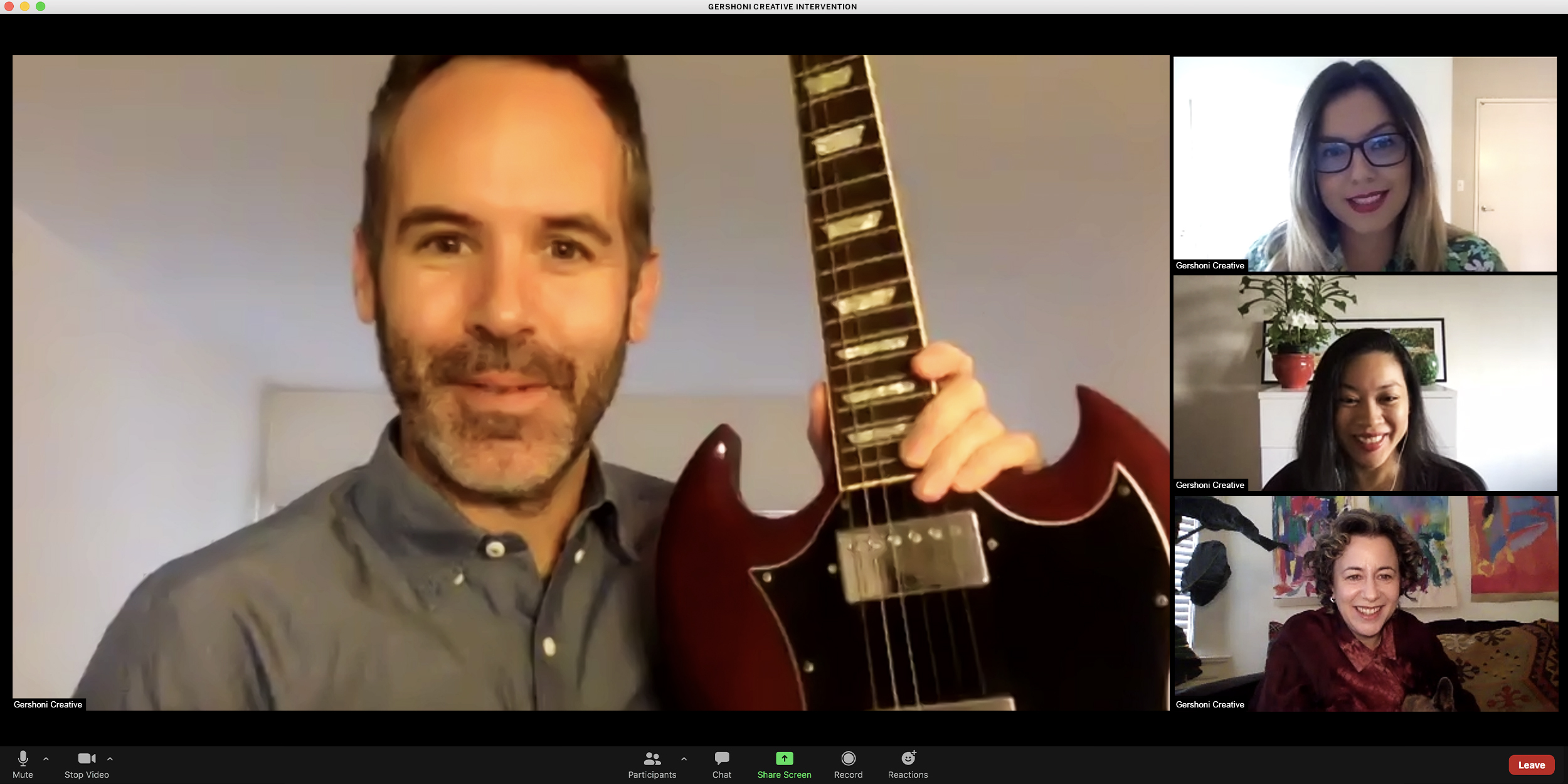
The Basics of Creative Interventions
You don’t need an ad hoc budget. You only need to allocate a slice of employee hours. We make room for two Creative Interventions a week, each taking a half hour to complete and another half hour to share on Zoom while we upload photos to Slack. Just remember not to overthink it. Structure is great but too much structure will kill even the best ideas.
Prompts should be things that get you out of your own head, up and moving around, and looking at things more closely. Here’s the catch: Sharing a photo isn’t the end of the experience. Everyone needs to tell a meaningful story about it, too. Maybe a team member explained that he chose a mug because he’d broken it three times and become attached to it through those cracks. Our senior designer Molly reinforces what this second requirement does: “It gives us a storytelling activity, a focus beyond just hanging out.”
Thought starters:
Whole-Brain Thinking
- QuaranHacks
Share something that has made WFH easier or more enjoyable (in the form of a list, photo, doodle, etc.), and help us maximize our remote intelligence. (see examples) - Virtual Gallery
Channel your inner preschooler and create a finger painting using paint or a paint substitute. - Self Portrait
Create a quick self-portrait or take a selfie in your environment.
Reawakening Creativity
- Joyful Objects
Take a photo of one thing in your home that brings you joy every time you look at it (or use it). (see examples) - Color Theory
Take a photo of a pop of color in your home. (see examples) - Not-So-Ugly Mug
Bring your favorite mug, cup or glass (with or without a beverage inside) and explain why it delights you so much.
Rehumanizing the Team
- Room With a View
Take a photo of the view from your workspace. (see examples) - Baby Face
Remember when you took your partner to meet your parents for the first time, and your mom — to your massive embarrassment — dug out the baby photos? Share a cute/funny/wacky baby or childhood photo and the story behind it. - Hearts Growing Fonder
Take a photo of an item in your house that reminds you of one of your team members.
Preventing Burnout
- Take a Hike
Get outside and get moving — biking, running, walking, whatever! — for at least 20 minutes today. Snap a pic of your little slice of Mother Earth and share it with us. (see examples) - Outside In
Take an hour out of your day to try to re-create something from the outside world that you’ve had a serious hankering for. - Small is the New Big
We’re celebrating the little things that have taken on greater meaning, value, or usage since we’ve been quarantined. Take a photo of something that used to seem small but is now big, and be ready to share.

Right now, we’re on Week 21. It’s a seed of an idea that’s taken root in our culture. What used to be served by our office’s design quirks or a Friday afternoon social hour has taken us to a new level of camaraderie. When I talk about the benefits of Creative Interventions, I talk about the team as the beneficiary. But that’s not entirely accurate. I’m the founder of an agency and I just fingerpainted with tempera paints in my kitchen.
Leaders have the same need for moments of play as anyone else.
As I Slacked my masterpiece to the team, I hoped that it would delight them as much as Zelia’s painting moved me. And if this small but meaningful step seems worthwhile for your team, I hope you’ll pick a prompt, send it out today and start tomorrow.
If you do, let me know how it goes. Comment below with the number you went with. And to stick around for more counterintuitive ideas from one dyslexic creative leader, sign up for the Dyslexic Design Thinking newsletter.

